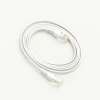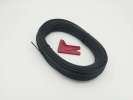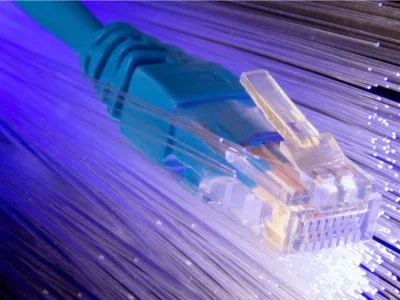Ethernet Cables
Ethernet cables are a type of network cable used to connect network devices such as computers, routers, and switches. These cables have RJ-45 connectors at both ends and are available in different lengths. Twisted-pair cables are divided into two categories: unshielded twisted-pair (UTP) and shielded twisted-pair (STP). UTP cables are more common and economical, while STP cables provide greater security and resistance to electromagnetic interference. UTP cables are classified into different categories based on their speed and resistance to electromagnetic interference. Cat5 cables are the oldest and support speeds of up to 100 Mbps. Cat5e cables are an improvement over Cat5 cables and support speeds of up to 1000 Mbps. Cat6 and Cat6a cables are even more advanced and support speeds of up to 10 Gbps and have greater resistance to electromagnetic interference. Cat7 cables are the most advanced and support speeds of up to 10 Gbps with greater resistance to electromagnetic interference and greater transmission distance.
Plastic Optical Fiber Cables
Plastic optical fiber cable is a type of cable used to transmit data through light. It is made of transparent materials and is used to connect devices over long distances, up to more than 50 km. Plastic optical fiber is ideal for applications that require high bandwidth and high data transmission speeds, such as high-quality video streaming or transferring large files. Additionally, it is highly resistant to electromagnetic interference (EMI) and physical damage, making it ideal for use in industrial environments or areas where there are sources of electromagnetic interference or where cables may be exposed to vibrations or impacts.
Similarities and Differences between Ethernet Cables and Plastic Optical Fiber Cables
Similarities:
- Both are used to connect network devices and transmit data across them.
- Both can be used in a local area network (LAN).
- Both can be used to connect devices to the internet.
Differences:
- Ethernet cables are made of copper and are quite thick, especially the most reinforced ones to avoid interference. On the other hand, plastic optical fiber cables are made of transparent materials and are very thin and have enough flexibility to bend.
- Ethernet cables are cheaper but somewhat more complicated to install than plastic optical fiber cables.
- Ethernet cables are affected by electromagnetic interference (EMI), while plastic optical fiber cables are totally resistant to EMI.
- Data transmission speed is more reliable in plastic optical fiber cables than in Ethernet cables.
Advantages of Plastic Optical Fiber Installation Kits:
- Higher data transmission reliability: Plastic optical fiber cables can transmit data at high stable speeds, while Ethernet cables can experience fluctuations due to their electromagnetic nature. This makes optical fiber ideal for applications that require high bandwidth, such as high-quality video streaming or transferring large files.
- Total resistance (immunity) to electromagnetic interference (EMI): Plastic optical fiber cables are immune to electromagnetic interference (EMI) that copper cables, such as Ethernet cables, are susceptible to. This makes them ideal for use in industrial environments or areas where there are sources of electromagnetic interference, as the fiber optic cables will not be affected by these interferences.
- Easy installation: Plastic optical fiber cables are more resistant to physical damage than copper cables. This makes them ideal for use in environments where cables may be exposed to vibrations or impacts, such as in multi-story buildings or outdoors, and also allows for more confident handling and installation.
Conclusion:
In conclusion, there is no "one is better than the other" but if you are looking for ease of installation and stability performance, Plastic Optical Fiber may be favored in this comparison. On the other hand, Ethernet cable comes in many versions and categories, and if there is a dedicated tube installation for telecommunications, it can be a good option. It is important to consider speed, security, and transmission distance requirements, as well as budget. Once these factors have been evaluated, users can make an informed decision about which cable type is best for their network.








